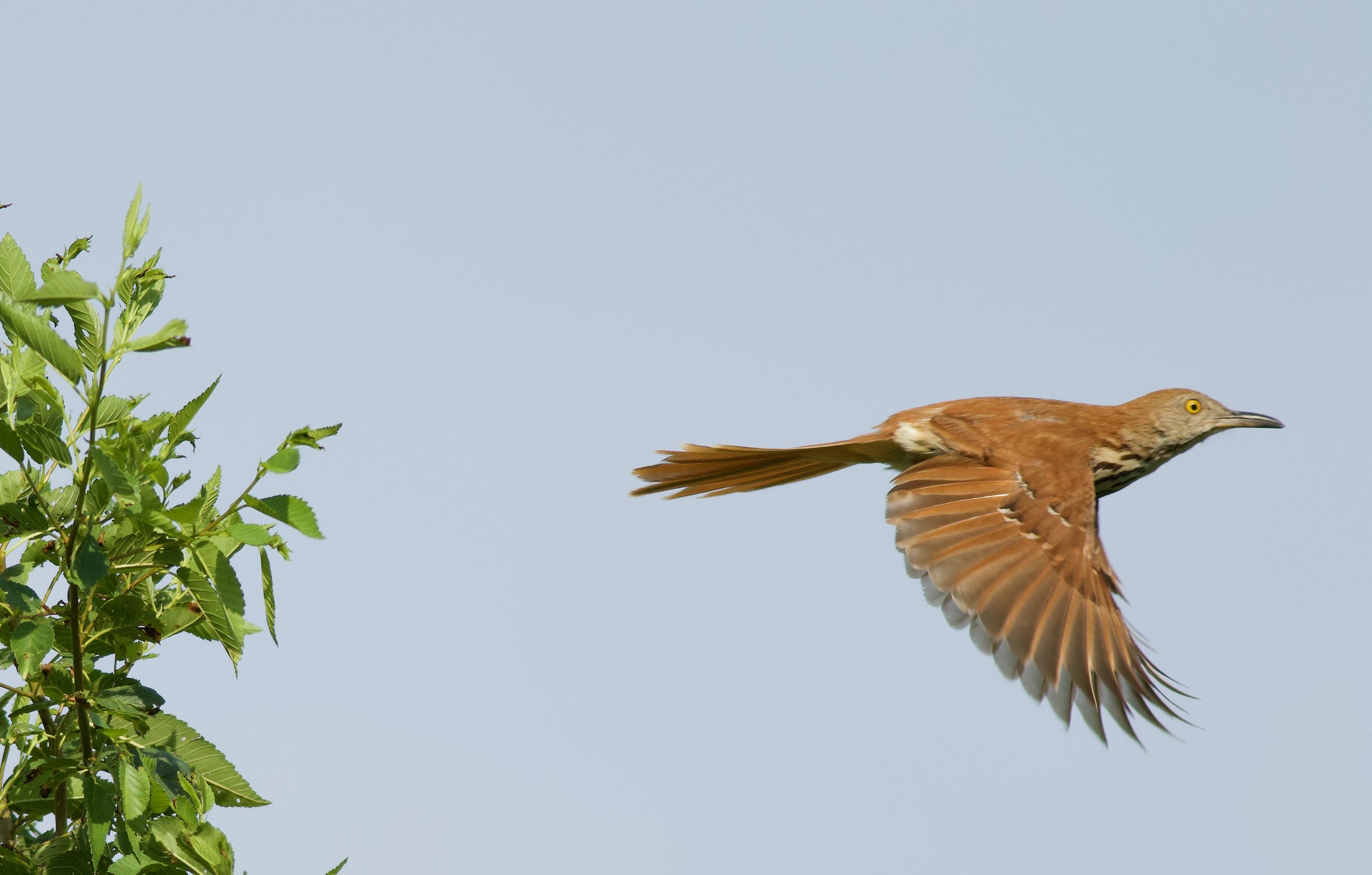It’s April 8. I’m enjoying my morning coffee watching the bird feeders and the prairie beyond. Suddenly, there’s the arrival of a large, bright rufous bird with an impressive down-curved beak, long tail, and emphatic spots (streaks) on the breast—a Brown Thrasher! I have not seen one for several years, but there’s no mistaking this beauty. I have to look carefully to enjoy its amazing yellow eyes. The thrasher checks out the sunflower seed feeder (which has been emptied by Red-winged Blackbirds), then drops to the ground and proceeds to feed in the grass and leafy debris. In typical fashion, the bird sweeps a stout beak from side-to-side to bring up insects and the seeds that have dropped from the feeder. This “thrashing” action gives the birds their name. The large number of periodical cicadas expected this year may make for a banner year for the thrashers as they nest and raise their young.
Brown Thrashers have not been documented to nest at Fair Meadows, but upon checking our records, we have seen them in migration about half of the years. The sightings tend to occur between April 2 and 25, most often April 15 through 18. In Wisconsin, thrashers are common breeders in the south central and southwestern parts of the state and fairly common in the north and southeast. The birds are found in thorny hedges, often along forest edges and in old fields. They build their rather large, cup-shaped nests in a tangle of dense shrubs or vines. Some nests may also be in small trees or on the ground. A friend who lives west of Madison maintains a hedge of American plum and prickly ash in a prairie surrounded by woods and savanna. This is a favorite nesting spot for the thrashers!
A Brown Thrasher takes flight (photo by Arlene Koziol).
It is no wonder that their populations are declining as the farm fencerows and roadside thickets have been cleared. Other causes of decline are predation by domestic cats in addition to collisions with cars and buildings. Although Brown Thrasher nests are commonly parasitized by Brown-headed Cowbirds, the thrashers often reject the cowbird eggs.
At Fair Meadows, most of the shrubby thickets at the edges of the woods and in the clearings were overtaken by buckthorn and honeysuckle. We hope that our years of removing these invasive species, and our ongoing efforts to replace them with American plum and prairie rose will entice some of the thrasher migrants to stay and nest. We already have small thickets of prickly ash and gray dogwood in the woodland edges that we are protecting with firebreaks during woodland burns.
We long to hear the Brown Thrasher’s beautiful song of paired musical phrases belted out from the top of a tall tree at Fair Meadows.
Written by Penny Shackelford, Fair Meadows Sanctuary resident manager
Cover image by Kelly Colgan Azar. A Brown Thrasher perched in some shrubbery.






